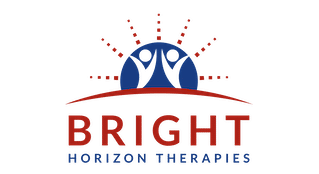Systemic oppression adds another layer of complexity. If you are 2SLGBTQ+, Black, Indigenous, or a person of colour, you may have encountered situations where asserting healthy boundaries feels unsafe or even harmful. The impact of boundary violations, discrimination, or abusive relationship dynamics can also dysregulate your nervous system, making it even harder to maintain firm yet flexible boundaries. To learn more, check out our free guide, “Toxic Relationships 101.” Furthermore, leaving toxic dynamics is an example of healthy boundaries if the other person isn’t willing to change.
While these realities are painful and not okay, we can develop the skills to navigate them with greater self-protection, self-trust, and resilience. In this post, we’ll explore how to discern between healthy and entangled boundaries and how to strengthen our ability to set and maintain boundaries that honour our well-being.
Signs of entangled boundaries
The article focuses on examples of healthy boundaries. However, it is essential that we also understand entangled boundaries. Understanding them can help us identify opportunities for growth and assess others’ boundary-setting skills.
Here are some common examples of unhealthy boundaries:
- Struggle to say no due to fear, guilt, or a need for approval
- Feel angry, abandoned, or rejected when someone says no to you
- Notice an imbalance in your relationships—either giving too much or receiving too much
- Spend so much time helping others that your own needs go unmet
- Take on other people’s problems as if they were your own
- Feel responsible for how others feel—or expect others to manage your emotions
- Have a high tolerance for boundary violations or disrespect
- Struggle to identify and express your own needs and wants
- Prioritize others’ opinions and feelings over your own
- Compromise your values and beliefs to please others or avoid conflict
- Share intimate details before a trusting relationship has been established
Here is an invitation to self-reflect on entangled boundaries:
Looking at this list, which areas resonate with you?
What would you like to strengthen?
And most importantly, how can you start making small, meaningful changes?
If you’re ready to explore further, dive into common boundary myths or how to effectively set healthy boundaries.
Examples of healthy boundaries
While it’s essential to identify areas where our boundaries need nurturing, it’s equally important to acknowledge the examples of healthy boundaries that support our well-being and relationships.
You have healthy boundaries if you:
- Feel comfortable saying no without guilt or fear
- Accept when others say no, respecting their limits
- Maintain a strong sense of identity and self-worth
- Experience balanced relationships with reciprocal giving and receiving
- Prioritize your needs without feeling selfish
- Discern which issues are yours to handle and which belong to others
- Offer empathy without feeling responsible for fixing others’ problems
- Refuse to tolerate boundary violations or disrespect
- Assertively communicate your needs and wants, understanding that requests are not demands
- Commit to nurturing your full potential and personal growth
- Take responsibility for your happiness and emotions, recognizing others do the same
- Value your opinions equally to others and embrace differences, finding win-win solutions
- Stand by your values and integrity, even if it risks rejection
- Share personal information gradually, fostering mutual trust and respect
On a scale from 0 to 10, how would you rate yourself in each area?
What aspects would you like to strengthen?
And how can you take small steps to enhance your boundaries?
Examples of healthy boundaries: The journey towards living them
I hope these examples of healthy boundaries increase your awareness of your own. Remember, setting healthy boundaries is a journey, not a destination. Many clients admire my boundary-setting skills, but it’s been a long journey to get here—I didn’t have this skill 20 years ago. Therefore, I often tell my clients that healthy boundaries are a daily practice. The process is different for everyone, shaped by past experiences, trauma, and the patterns we’ve learned over time. Be gentle with yourself. Growth happens step by step.
Decide what area you want to improve on
Instead of trying to change everything at once, choose one area to focus on. As you build awareness and practice, your boundaries will naturally become stronger. Later, revisit this list to reflect on your progress and adjust as needed. If you’re ready to explore further, dive into common boundary myths.
Ask for help when you notice obstacles in achieving your goal
You’re not alone if setting boundaries feels overwhelming or brings up deep emotions. Trauma can shape our ability to feel safe asserting our needs, and working with a professional can help. Online trauma counselling can provide guidance and support as you navigate this process.
Recognize the state of your nervous system
Understanding the window of tolerance—your nervous system’s ability to stay regulated under stress—can also be a powerful tool if you work towards implementing the examples of healthy boundaries. When we are dysregulated, setting and maintaining boundaries effectively is harder. Learn more about the window of tolerance and how it impacts your ability to stay present and assertive.
Additionally, Polyvagal theory can give you insights into how your nervous system responds to cues of safety and danger in your relationships and environments.
Asking for help is a strength, not a weakness. Whether through therapy, coaching, or community support, you don’t have to figure it all out alone. Growth happens in connection.
“If you want to explore boundaries further, check out our article ‘The Complete Guide to Boundaries in Relationships.”
Sources
My professional training, ongoing study, professional experience, and the works of trusted authors and organizations in mental health and social justice inform this article. The references below include the books, trainings, and evidence-based resources that shaped my understanding and approach, providing context and support for the ideas discussed here.
Enns, V. (2020). Trauma – Strategies for resolving the impact of post-traumatic stress. [Online professional training]. Crisis and Trauma Resource Institute.
Center for Right Relationships (2012). Organization & relationship systems coaching training [in-person training curriculum]. Center for Right Relationships
Instituto Europeo de Coaching. (2011). Certificación internacional en coaching: Nivel experto en coaching [International certification in coaching: Expert level in coaching] [Diploma, 210 hours]
Katherine, A. (1994). Boundaries: Where you end and I begin: How to recognize and set healthy boundaries. Hazelden Publishing



